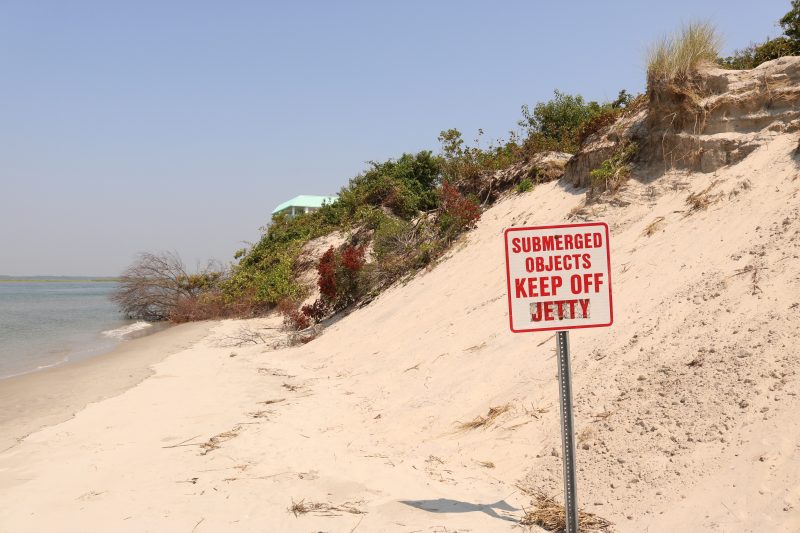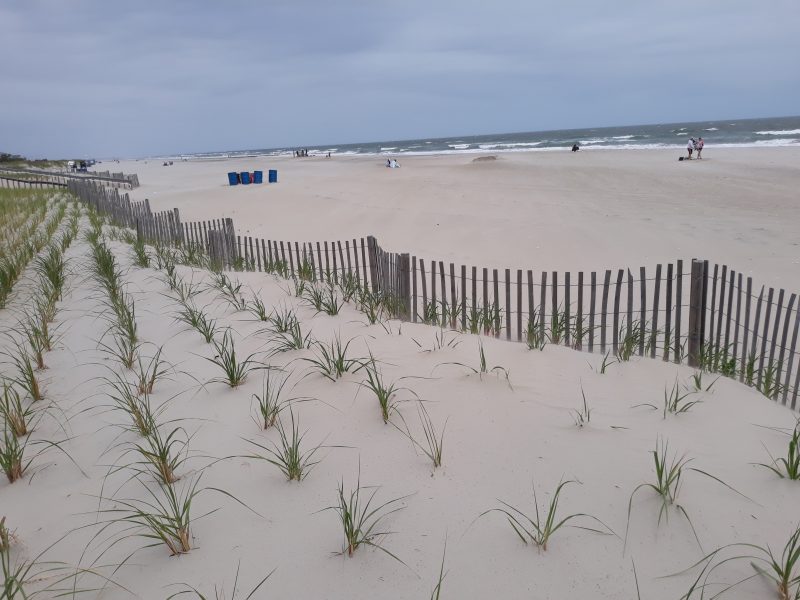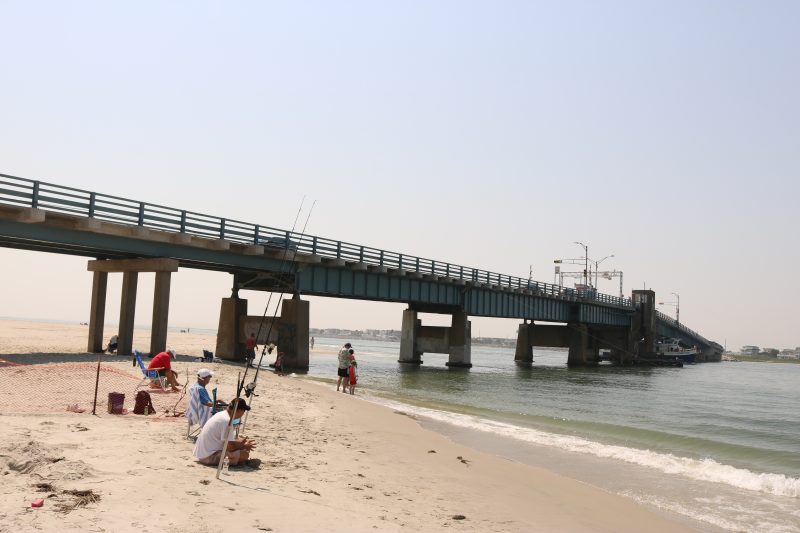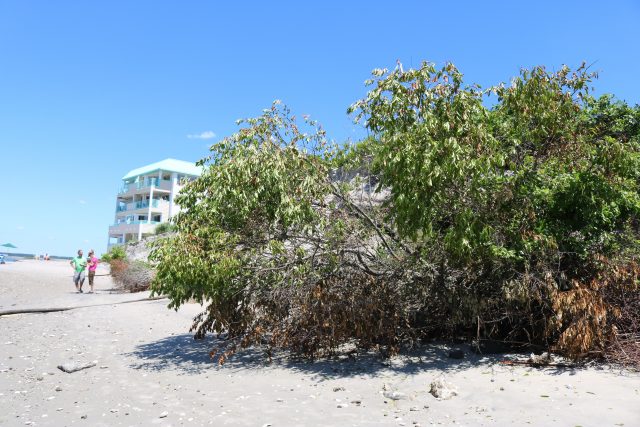By DONALD WITTKOWSKI
The federal agency that oversees beach replenishment projects says it has no money to help Sea Isle City restore some badly damaged sand dunes in Townsends Inlet as efforts continue to figure out why the dramatic erosion is occurring.
However, what the U.S. Army Corps of Engineers does have is critical information gleaned from ongoing surveys of the eroded shoreline to help the city solve the mystery.
“We’re providing raw data to be used to assess the erosion,” said Ed Voigt, a spokesman for the Army Corps.
The Army Corps is using its boats to conduct an annual survey of Sea Isle’s shoreline – known as “project monitoring” – to see if the beaches are eroding, growing or staying the same.
The survey normally is done on Sea Isle’s oceanfront, but is being expanded this year to include the erosion to the dunes and beaches occurring on the bay side of the Townsends Inlet Bridge, Voigt said.
He explained that the survey information would help Sea Isle and the New Jersey Department of Environmental Protection if they choose to replenish the bay-side dunes in Townsends Inlet either by themselves or through a partnership.
“We are extending the monitoring so that if the state or anyone else will do it, they will have the survey info,” he said in an interview Thursday.
So far, it remains a mystery why the dunes on the bay side of the Townsends Inlet Bridge have been collapsing in an avalanche of sand, trees and rocks in the past few months.

George Savastano, Sea Isle’s business administrator, said the raw data from the Army Corps should help the city while it explores both short-term measures and a longer-range strategy to replenish the eroded dunes.
Savastano mentioned the possibility that Sea Isle could do some “sand harvesting” in the short term to restore the dunes. In that scenario, sand would be taken from other beaches where it is plentiful and used to restore the depleted dunes in Townsends Inlet.
Longer-term plans seem to be more complicated. Savastano explained that Sea Isle hopes that the Army Corps will consider including the bay side of Townsends Inlet in the next beach replenishment project for the city.
But that project would need a separate environmental permit and probably would not happen for “a couple of years,” he said.
One possible scenario is that Sea Isle could “piggyback” on the Army Corps’ next beach erosion project to restore the beach and dunes in Townsends Inlet, Savastano said.
He noted that Ocean City did something similar to replenish its eroded north end beaches while the Army Corps was restoring the shoreline in other parts of town.

In 2020, Sea Isle was part of a $32.5 million beach replenishment project that also included Strathmere and Ocean City. The project was mostly funded by the Army Corps and the New Jersey Department of Environmental Protection. The three towns each kicked in a smaller share.
However, the bay side of Townsends Inlet was not included in the beach replenishment work because it fell outside the boundaries of the project in Sea Isle. Voigt indicated that the bay side would not be part of future beach restoration projects in Sea Isle supervised by the Army Corps.
“We don’t go to the inlet itself to wrap around to the bay,” he said.
Moreover, the Army Corps currently has no funding to even consider replenishing the bay-side beaches and dunes in Townsends Inlet – not even on an emergency basis, he said.
“We have nothing right now,” he said. “There is no money in hand and no money is expected right around the corner for that project,” he said.
Congress still must approve funding for the next round of beach replenishment projects in New Jersey and Delaware supervised by the Army Corps. Even if funds become available, it would not be until the fall or winter of 2022 for the next projects to begin, according to Voigt.
Sea Isle’s most recent beach replenishment work was completed in 2020 and included more than 750,000 cubic yards of fresh sand to restore the shoreline between 28th and 52nd streets in the center of town and from 74th Street to 93rd Street on the ocean side of Townsends Inlet.

Townsends Inlet, a swift-running channel that separates Sea Isle and Avalon, is a superhighway of sorts linking the ocean and the bay. The powerful currents are known to cause changes to the surrounding shoreline almost every year.
But this year has been even worse. In April, the beach next to the bay side of the bridge was stripped of its top layer of powdery sand. Meanwhile, the beach on the ocean side of the bridge was radically reshaped with the creation of a massive sandbar jutting far out into the inlet.
All of those changes have been followed by severe erosion of the dunes on the bay side next to Townsends Inlet Waterfront Park. The mountainous dunes have been sheared off to create cliff-like drop-offs that appear to be 20 or 30 feet high in some places.
The waterfront park, despite being just steps from the busy summer beaches, is a tranquil hideaway classified as a maritime forest. It is considered one of Sea Isle’s most significant natural assets.
Yet mature trees and bushes that live on top of the dunes overlooking the inlet have been taking a beating from the erosion. As the dunes have collapsed, some of the trees have toppled over onto the beach below.
The city has posted warning signs and a fence to temporarily close the beach on the bay side of the bridge. Despite those efforts by the city, beachgoers and anglers routinely ignore the signs.








